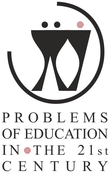HOW CAN ATOMS, THE FUNDAMENTAL OF CHEMISTRY, BE TAUGHT ADEQUATELY IN THE 21ST CENTURY?
| Title | HOW CAN ATOMS, THE FUNDAMENTAL OF CHEMISTRY, BE TAUGHT ADEQUATELY IN THE 21ST CENTURY? |
| Publication Type | Journal Article |
| Year of Publication | 2009 |
| Authors | Rehm, M, Buck, P |
| Journal | Problems of Education in the 21st Century |
| Volume | 17 |
| Start Page | 25-38 |
| Date Published | November/2009 |
| Type of Article | Original Article |
| ISSN | 1822-7864 |
| Other Numbers | ICID: 900322 |
| Keywords | approaches to teaching atoms, pedagogical content knowledge, understanding atoms |
| Abstract | This paper is a systematic contribution to Pedagogical Content Knowledge (Shulman, 2004) on teaching atoms in Chemistry. We justify our normative starting points (we call them “axioms”) and proceed |
| URL | http://oaji.net/articles/2014/457-1399914243.pdf |
| Refereed Designation | Refereed |
| Full Text |
